
Between July and September 2017, the Galapagos Verde 2050 (#GV 2050) team, together with the entomology team of the Charles Darwin Foundation and park guards from the Galapagos National Park Directorate carried out ecological monitoring of the Opuntia echios var. echios seedlings present on the island (without water-saving technology). Pitfall traps and Berlese funnels were placed in order to evaluate the mesofauna present in the ecosystem as part of the process of ecological restoration on the island.
Ecological monitoring was carried out in three study sites, with a total of 45 Opuntias monitored including those that were controls and also those that used water saving technology. The kind of information recorded includes environmental and biological data such as: height of the plant, state, presence/absence of new leaves (cladodes), presence/absence of herbivory, presence of flowers and fruits, biological observations (such as soil and geographical location).
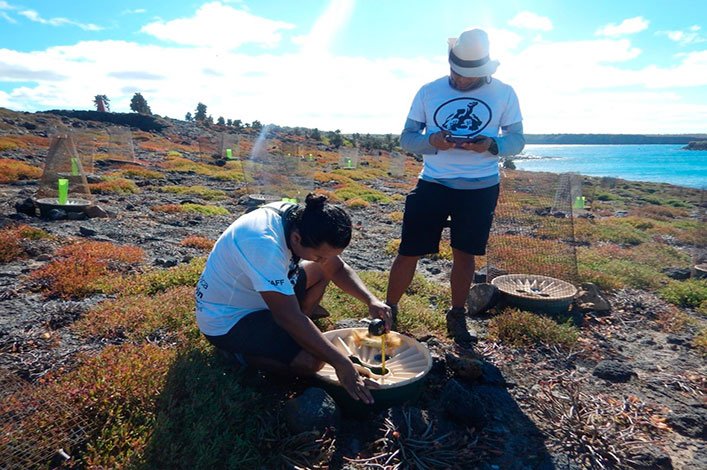
During this expedition of approximately six months, the water boxes (Groasis technology) were completely refilled at the three study sites on Plaza Sur; in order to achieve this, large containers filled with water were transported from Santa Cruz Island and with the help of the GV2050 team and one park guard from the Galapagos National Park.
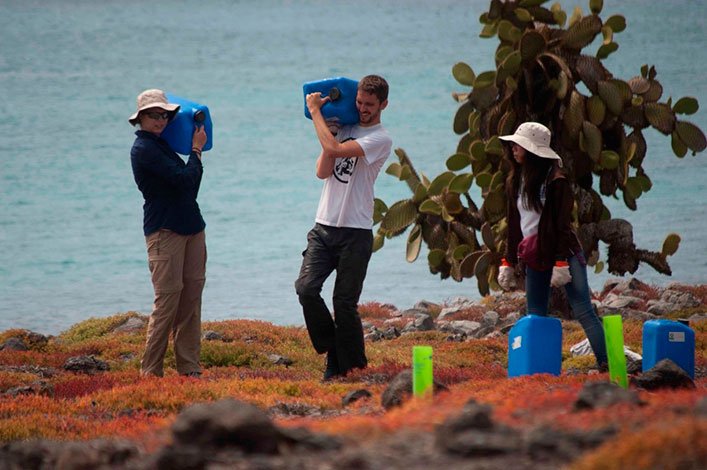
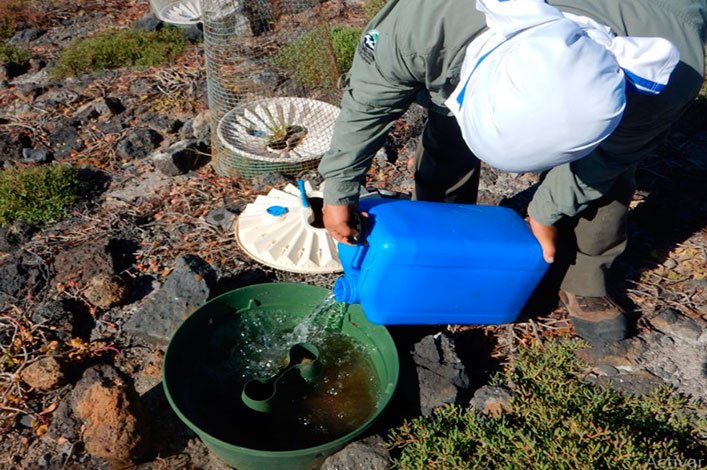
With the objective of protecting the Opuntia echios var. echios seedlings from the herbivorous land iguanas of the islands, from the beginning of the ecological restoration large steel fences were placed around each Groasis Technology water box. These fences will be removed once the cacti can survive on their own.
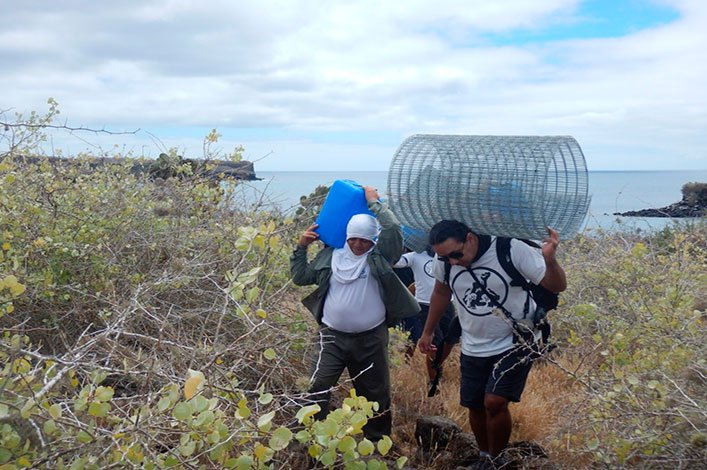
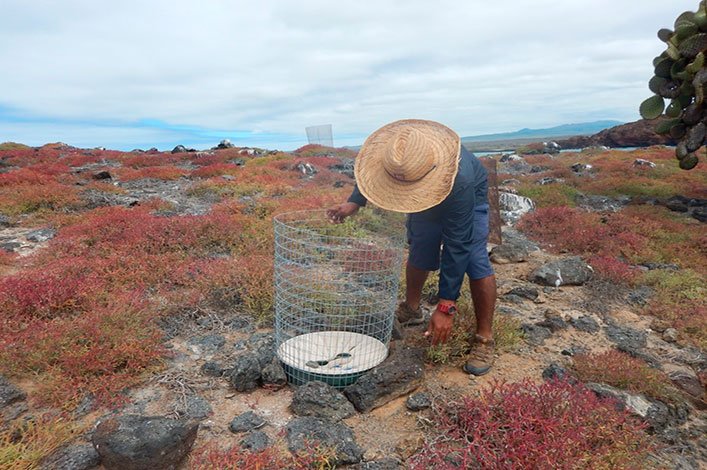
As part of the ecological restoration of the island, we considered starting various sample sites at different stations of the year starting in April until now with “Analysis of edaphic mesofauna present on Plaza Sur Island”.
During this expedition, four Pitfall traps were placed in different zones of the island, such as the ravine near the coast, cliffs, shrubby areas and the dock with the end goal of capturing terrestrial invertebrates present at different substrates, which were preserved in alcohol from the same island of origin.
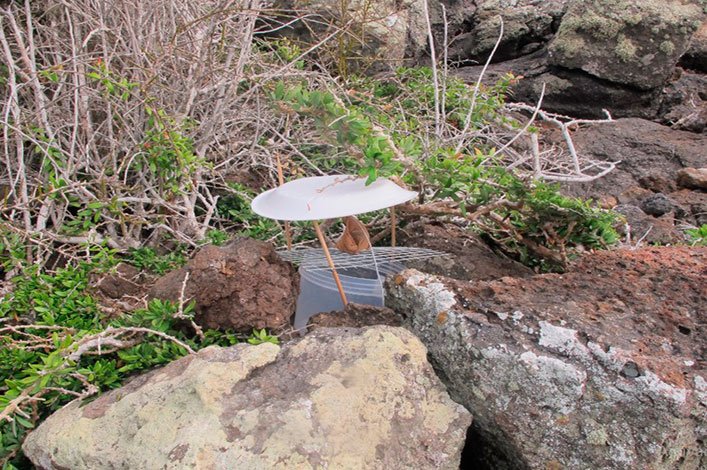
So that the analysis of mesofauna is more complete, we also carried out manual capture of terrestrial invertebrates in specific parts of the island during the daytime.
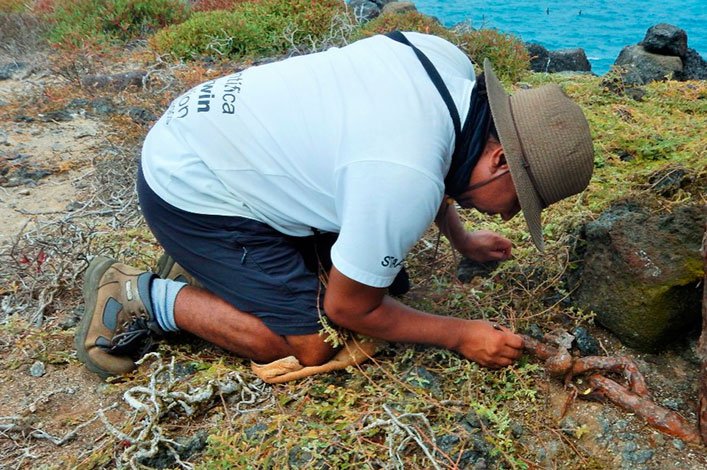
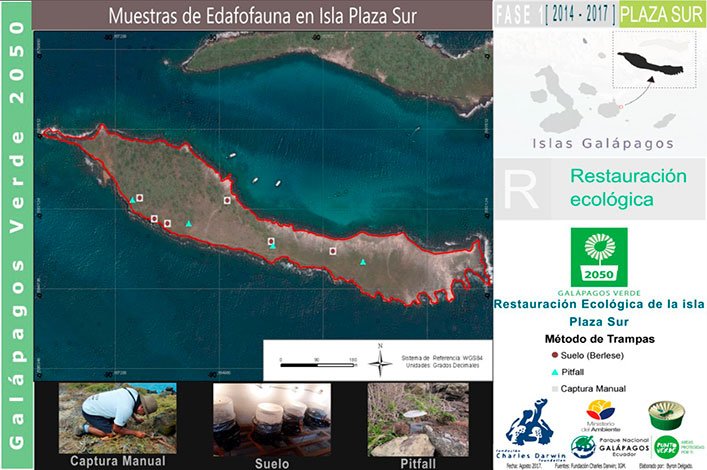
At the Charles Darwin Foundation’s laboratory, we proceeded with an analysis of the samples collected with Pitfall traps and the soil samples processed through Berlese methodology with the goal of evaluating the edaphic mesofauna present on the island.
The procedure for the analysis of Pitfall traps was as follows: separation of organisms (invertebrates) by morphotype with the help of a stereoscope and taking photographs of each individual; afterwards the organisms were identified by categories and categorized taxonomically to include them in the invertebrate collections of CDF (ICCDRS) and obtain a registry of the invertebrates present on the island.
Thanks to the support of Biologist Edgar Segovia (museum volunteer) and Lenyn Betancourt, technical curator of the invertebrate collection, 122 specimens were found in total were found, pertaining to 39 species/morphotypes that had been identified, within 17 families of morphotypes identified. In each sample, the groups that dominate are Formicidae (Tetramorium lanuginosum) y Agromyzidae (Ag1 posiblemente Phytoliriomyza sp., seguidos de Tenebrionidae (Stomion sp), all following the quarantine procedures established in the plan of action of the project. (Jaramillo et al. 2017a; Jaramillo et al. 2017b).
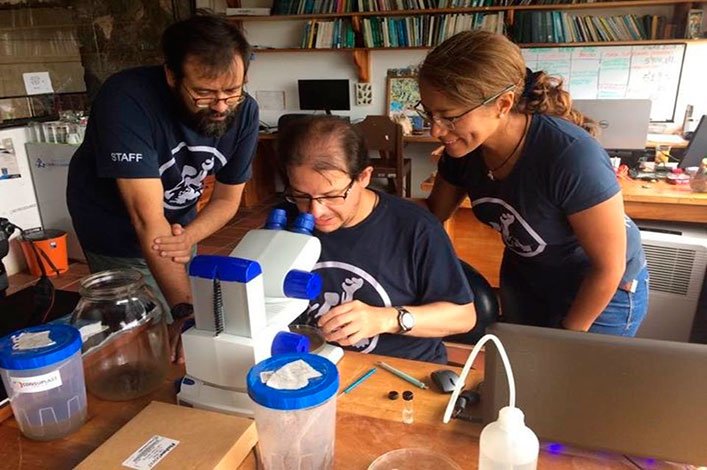
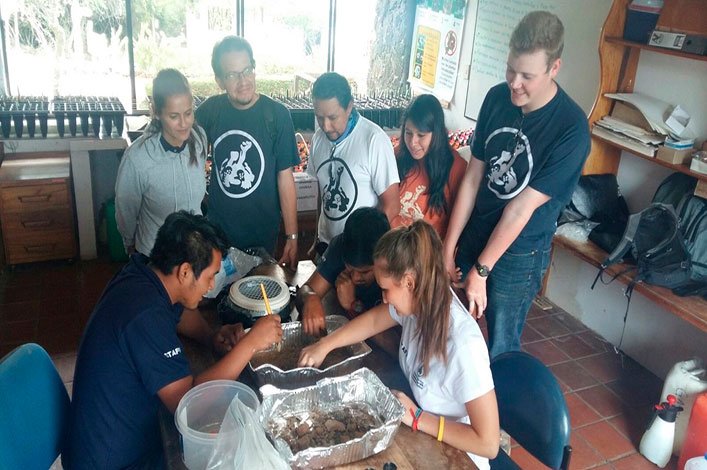
Additionally, the remains of leaves and seeds were separated from the soil samples and identified to later be included in the collections of the herbarium as auxiliary samples and as part of this project.

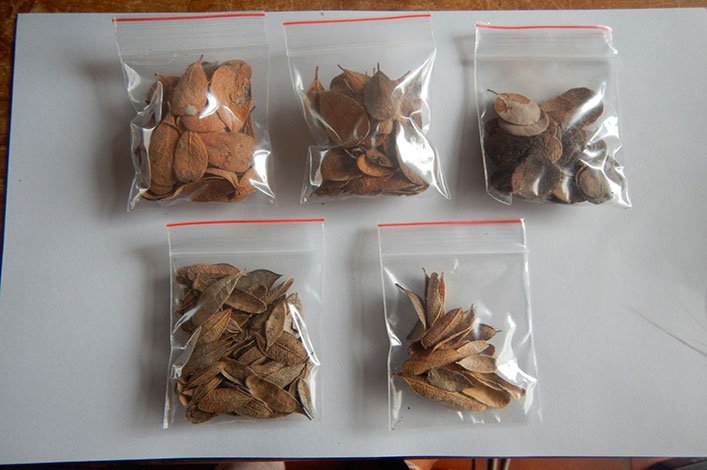
Land iguana excrement was randomly collected on the surface of the entire island and it was later transported to the laboratory of the Charles Darwin Foundation with protocols established by the Galapagos National Park Directorate and guided by the Action Plan for the ecological restoration of Baltra and Plaza Sur. This collection was carried out to obtain sees of Opuntia echios var. echios and continue with the germination tests ex situ and viability tests, in addition to obtaining seeds of different species, identifying them and integrating them in the herbarium (CDS) of the Charles Darwin Research Station.
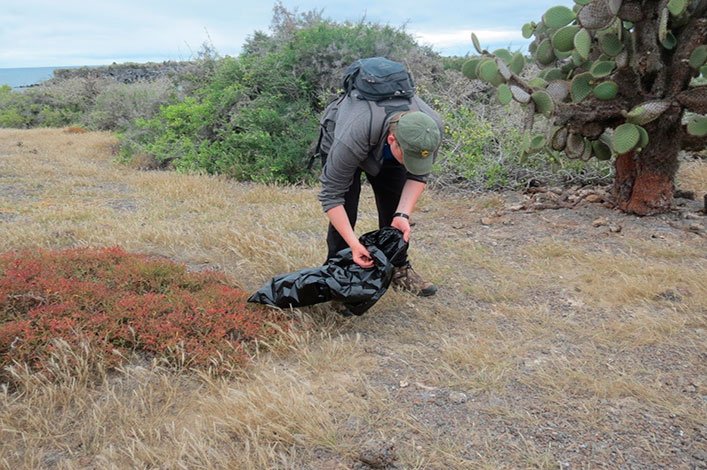
Galapagos Verde 2050 project is implemented by the joint work of the Charles Darwin Foundation and the Galapagos National Park Directorate. The continuity of the project is possible thanks to the support of the COmON Foundation, The Leona M and Harry B. Helmsley Charitable Trust and Bess Forest Club.
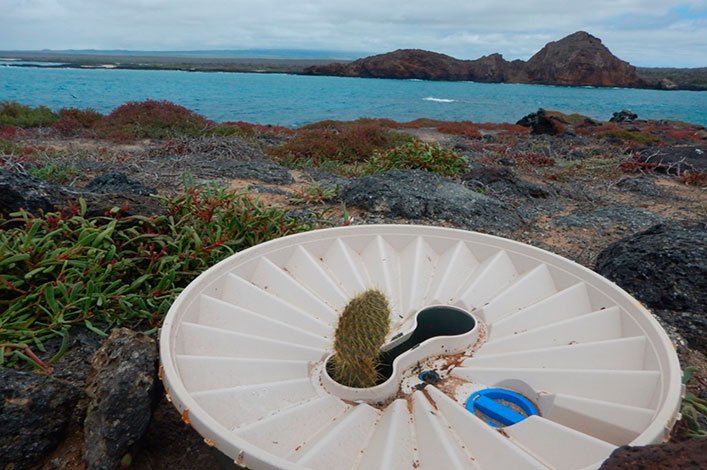
This project is one of many conducted by the Charles Darwin Foundation and depends entirely on the generosity of our supporters. Please donate today.
References
Jaramillo P, Tapia W, GIbbs J (2017a) Action Plan for the Ecological Restoration of Baltra and Plaza Sur Islands. 2:1-29
Jaramillo P, Tapia W, Romero ML, Gibbs J (2017b) Galápagos Verde 2050: Restauración ecológica de ecosistemas degradados y agricultura sostenible utilizando tecnologíaS ahorradoras de agua. Fundación Charles Darwin, Puerto Ayora, Isla Santa Cruz.




